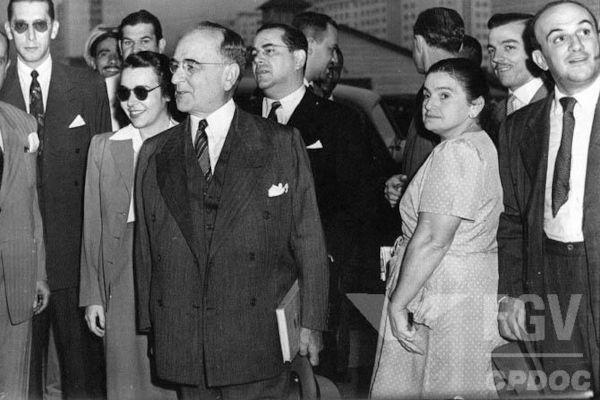The presidential government of two terms, 1st term (1994-1997) and 2nd term (1998-2002), of Fernando Henrique Cardoso was marked by the effective implementation of the Neoliberal policy in Brazil.
Fernando Henrique Cardoso was born in the state of Rio de Janeiro on June 18, 1931, with less than ten (10) years old he moved to São Paulo, there he completed the course in Social Sciences at the University of São Paulo (USP), carried out his postgraduate studies at the University of Paris. In the 1960s, after the Military Coup in Brazil, he was exiled to Chile and later to France, where he pursued his postgraduate studies, he returned to Brazil as a professor at USP in 1968, with the decree of the Institutional Act (AI-5) he was retired from his duties teachers.
After his retirement, he was invited to teach at some foreign universities and founded, together with other Brazilian intellectuals, the Brazilian Center for Analysis and Planning (CEBRAP). This Center had as its main objective the analysis of the socioeconomic reality of Brazilian society.
His political life began in 1978, when he was elected alternate to Senator Franco from São Paulo Montoro, in 1983, took over the senate when Franco Montoro was elected governor of the state of São Paulo. Paul. He lost the elections for the mayor of São Paulo to Jânio Quadros in 1985, but in 1986 he was elected senator for São Paulo.
Fernando Henrique Cardoso was one of the founders of the Brazilian Social Democratic Party (PSDB). In the first year of President Itamar Franco's mandate, Fernando Henrique took over the Ministry of Foreign Affairs in 1992, and in the following year he was assigned the role of Minister of Finance. In this folder, he carried out a monetary reform in the Brazilian economy that was suffering from inflation, the so-called Real Plan.
In 1993 he left the Ministry of Finance and launched his candidacy for the presidency of the Republic by the PSDB, his main adversary was Luiz Inácio Lula da Silva, who was running for president by the Workers Party (PT), Lula was the favorite to presidency. Fernando Henrique Cardoso won the elections and assumed the presidential portfolio in 1994. His main objective during his first term was to fight inflation.
Do not stop now... There's more after the advertising ;)
In his first term, but precisely in 1997, FHC (as he became known) continued the process of structural reforms with the purpose of preventing the return of inflation, seeking to leave the economy stable. During this mandate, the president guided the privatization of several Brazilian state-owned companies, such as Companhia Vale do Rio Doce (a company of the mining and steel industry), Telebrás (telecommunications company) and Banespa (bank owned by the government of the state of São Paulo Paul). The purchase of state-owned companies took place, above all, by foreign groups, which acquired the shares or bought a large part of them, thus becoming majority partners.
Still in 1997, FHC managed to send and approve the reelection amendment in the National Congress, becoming candidate again for the presidency of the republic and still having Lula as its main adversary. The Real Plan and inflation control continued to be his main political propaganda, which favored FHC yet another victory at the ballot box, winning reelection.
In 1999, FHC assumed his second term as president of Brazil, during this term there were no major investments in structural reforms (privatization). There were, yes, some reforms in the Education sector, being approved in 1996 the Laws of Guidelines and Bases for Education (LDB), and later the Curriculum Parameters for Teaching were created Basic.
At the end of his second term (2002), having spent eight (8) years in power, FHC managed to control Brazilian inflation, however, during his government, income distribution in Brazil continued to be unequal, the income of the rich 20% of the population continued to be about 30 times higher than that of the richest 20% of the population. poor. Brazil became excessively dependent on the International Monetary Fund (IMF). The FHC government was responsible for the effective insertion of Brazil into politics neoliberal.
FHC left the presidency on January 1, 2003, and who assumed it was Luiz Inácio Lula da Silva.
Leandro Carvalho
Master in History
Would you like to reference this text in a school or academic work? Look:
OAK, Leandro. "Fernando Henrique Cardoso government"; Brazil School. Available in: https://brasilescola.uol.com.br/historiab/governo-fernando-henrique-cardoso.htm. Accessed on June 27, 2021.

